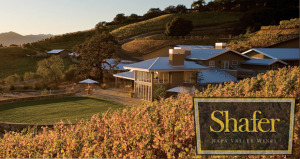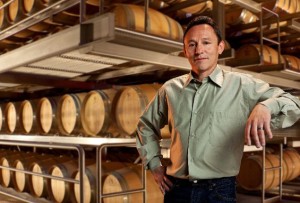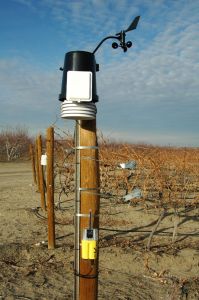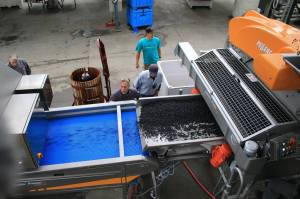Technology Within The Vineyard
Though winemaking is an ancient craft, current ideas and developments show it is also a very dynamic one. And, though those current developments are most often technological in structure, they’re highly interactive and responsive to very human personal tendencies and behaviors.
We talked about how early iterations of consumer wine apps for mobile devices were responsive to what information the user wanted to know (varietal, brand, price), how that user wanted the information delivered (text, video, images), and where the user was located when they accessed the information (meaning they were LBS-enabled, for Location-Based Service).
 But the wine industry remained virtually unchanged by the technology boom of the last century, and that is undeniably part of wine’s traditional appeal. Moldy caves, dusty shiners, and “funky” aromas hearken back to a romantic past and have made winemaking synonymous with tradition, since they’ve been making wine since 7000 B.C. But now they’re applying new techniques to that process, and we should explore how vineyards are harnessing technology such as solar panels and weather stations to create better, more sustainable wine.
But the wine industry remained virtually unchanged by the technology boom of the last century, and that is undeniably part of wine’s traditional appeal. Moldy caves, dusty shiners, and “funky” aromas hearken back to a romantic past and have made winemaking synonymous with tradition, since they’ve been making wine since 7000 B.C. But now they’re applying new techniques to that process, and we should explore how vineyards are harnessing technology such as solar panels and weather stations to create better, more sustainable wine.“I’m an in
 novator when it comes to making the best wine possible, whatever it takes” says Doug Shafer, president of Shafer Vineyards. Shafer started working at the vineyard when his father purchased the estate in 1973 and has seen the technology involved with winemaking change drastically in the decades since.
novator when it comes to making the best wine possible, whatever it takes” says Doug Shafer, president of Shafer Vineyards. Shafer started working at the vineyard when his father purchased the estate in 1973 and has seen the technology involved with winemaking change drastically in the decades since.“Grape growing and winemaking in this valley has changed tremendously in the last 40 years,” Shafer says. “Experience, innovation, technology, computerization—we’re able to get more information, better information that we can make better decisions with.”
The grapes at Shafer Vineyards are still harvested by hand, but nearly every other step of the process has introduced some kind of technological innovation. Winemaker Elias Fernandez shows some of the technology that Shafer Vineyards is using to continue improving their product.

Weather stations in the vineyard track temperature, wind, humidity throughout the day and transmit the information via wifi to Fernandez and his team. They also utilize thermocouples to measure how much water is in an individual grapevine, using this information to conserve water and produce a better grape.
“By eliminating water at the right times, and by giving water at the right times, we can actually have those berries grow small,” Fernandez explains. “The smaller the berry, the bigger the skin to juice ratio is. That means more robust, big, juicy wines.”
Technological innovations are also in important at the grape-crushing stage of wine production. Fernandez now uses a computerized optical sorter to pick the best grapes based on shape and color. Shortly after implementing these cutting edge technologies, Shafer started to see them pay off.
“We noticed a change almost overnight,” Shafer said. “The wines right in the fermentor, only five or six days old, the aromas were fresher, cleaner, more focused. It was phenomenal.”
The fermentation tanks are also hooked up to the wireless network that can alert Fernandez instantly as changes happen in the tanks. For example, if the temperatures in the fermentation tanks get too hot, Fernandez will receive an email, phone call, and a text message immediately alerting
 him to the problem. “Believe me, I’ve had them at two in the morning sometimes,” he boasted.
him to the problem. “Believe me, I’ve had them at two in the morning sometimes,” he boasted.Innovations even extend to the aging process in the Shafer Vineyards cellars, where they employ an air-purification system developed by NASA to ward off any mold, dust, or other microbes in the air that might be detrimental to the wine as it ages in oak barrels.We asked if this tech-directed decision-making might take away from what she refers to as a winemaker’s “instinct,” but Shafer Vineyards’ Fernandez sees the combination of the two as a benefit to the winemaking process.“I’ve been on this property for over 29 years now, so I’ve used a lot of that instinct,” Fernandez says. “I use the technology to back up what I feel. It just adds to the whole picture so that I can make better wine.”
Cheers to that!



 0
0